History of Charity and Civic Action
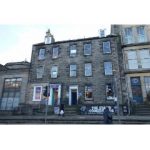 |
1. Site of Edinburgh Association for Improving the Condition of the Poor On 30th March 1868, the Edinburgh Association for Improving the Condition of the Poor (now EVOC) began at 5 York Place. Read more… |
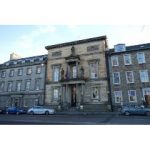 |
2. Royal College of Physicians Professor William Pulteney Alison was President of the Royal College of Physicians from 1836-38 and a key figure in early debates about Edinburgh’s poor relief provision.. Read more… |
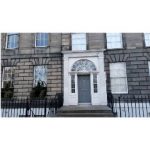 |
3. Site of the First Citizens Advice Bureau This is the original site of the first Citizens Advice Bureau, opened in Edinburgh on 13th November 1939. Read more… |
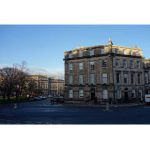 |
4. Site of Edinburgh and Old People’s Welfare Council The first branch of the Edinburgh and Old People’s Welfare Council, overseen by the Edinburgh Council of Social Service, opened on this site in the autumn of 1941. Read more… |
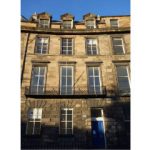 |
5. Home of Flora Stevenson Flora Clift Stevenson, noted philanthropist and social and government reformer, lived here at 13 Randolph Crescent. Read more… |
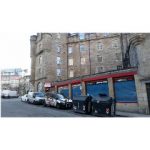 |
6. Site of the Firelighter Factory Starting in 1869, a building at 14 Leith Walk served as a firelighter factory where unemployed men could prove their willingness to work. Read more… |
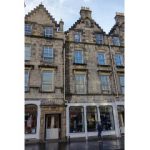 |
7. Site of Castle Trades Hotel In the 1870s, Castle Trades Hotel opened here as a lodging house with room for 327 men in the 100 tiny wooden cubicles on each of its three floors. Read more… |
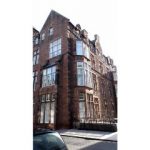 |
8. Site of Royal Hospital for Sick Children On 15th February 1860, the Royal Edinburgh Hospital for Sick Children opened its doors at 7 Lauriston Lane with 20 beds and a dispensary. Read more… |
 |
9. Site of The School of Study and Social Training On the 8th January 1918, the first lecture for the Edinburgh School of Social Study and training was held. Read more… |
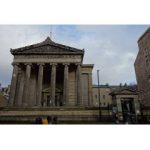 |
10. Royal College of Surgeons Sir Henry Duncan Littlejohn was an expert in both forensic medicine and public health.He became President of the Royal College of Surgeons in 1875 and was appointed as Edinburgh’s first Medical Officer of Health in 1862. Read more… |
 |
11. Site of The Sewing Room In 1871, Flora Stevenson opened a Sewing Room here for five months of the year during winter to allow women the same chance the men had at the Firelighter Factory. Read more… |
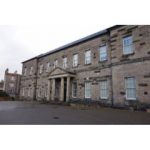 |
12. Site of Edinburgh University Settlement The Edinburgh University Settlement (EUS) was part of a larger settlement movement in the UK and US, in which ‘settlement houses’ were established in poorer areas where middle-class volunteers would live and attempt to improve the lives of locals. Read more… |
 |
13. Penny Dinners A particularly bad winter in 1869/1870 lead to the Edinburgh Association for Improving the Conditions of the Poor to commit to trying to feed the hungry in whatever way they could. Read more… |
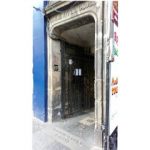 |
14. Site of Fall of House On the 24th November 1861, a seven-story house here in the High Street suddenly collapsed in the middle of the night, burying nearly all of the inhabitants and killing 35 of them. Read more… |
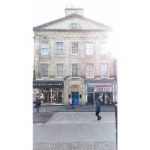 |
15. Site of The Edinburgh Society for the Suppression of Begging The Edinburgh Society for the Suppression of Begging was founded in 1813 with the desire to eliminate street begging in the capital. Read more… |
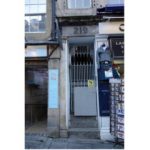 |
16. Site of Elsie Inglis Hospital On this site, in 1904, Dr Elsie Inglis opened a hospital for women and children, known as The Hospice, and run only by women. Read more… |
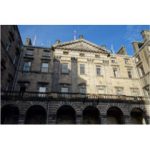 |
17. City Chambers The City Chambers are the civic headquarters of Edinburgh City Council. Read more… |
 |
18. EVOC The modern day evolution of the Edinburgh Association for Improving the Condition of the Poor, EVOC is the first point of contact for the third sector (voluntary and non-profit groups) in Edinburgh. Read more… |
This tour offers an insight into the rich history of the third sector (charity and voluntary action) in Edinburgh, with a particular focus on the individuals, organisations and events that have shaped EVOC. Since 1868, EVOC, originally known as the Edinburgh Association for Improving the Conditions of the Poor, has been at the heart of campaigning for social justice and the improved conditions of Edinburgh’s citizens. The tour is not exhaustive of all there is to learn about the third sector in Edinburgh!
The route starts on York Place and travels west through Edinburgh’s New Town before heading south-east through the Grassmarket towards Quatermile, on the edge of the Meadows. Walkers continue through the University of Edinburgh’s central campus into Newington, before looping back through the Canongate and on to the picturesque Royal Mile. The tour finishes under the gaze of the Castle on Castle Esplanade.
The route is approximately 6km or 3.75 miles long and should take 2-2.5 hours at a leisurely pace. Unless explicitly indicated, the buildings at the stops are not open to the public.
Editorial contributions
This walking tour is produced by EVOC as part of the organisation’s 150th anniversary celebrations, the EVOC 150 project. Editorial contributions are from Lucy Ridley (Programme Manager – EVOC150) and Laura Beattie (Researcher – EVOC150).
Special thanks to Ema Smekalova (Volunteer – EVOC150) for her contributions to the photography, and to the Living Memory Association for the digitisation of the EVOC archive photos. The EVOC 150 project is supported by the National Lottery Heritage Fund, with thanks to players of the National Lottery.
Any errors or copyright infringements are unintentional. This tour is for educational purposes. If you have any questions or concerns please contact comms@evoc.org.uk.
